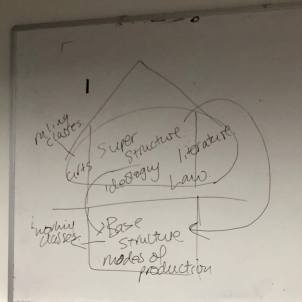Minerals from the Democratic Republic of Congo are used in mobile phones. Congo is extremely poor despite all its natural resources.In the past 15 years, 5 million people have died as a consequence of civil war in DR Congo.
The UN have for years reported links between the minerals trade and the war.
Do our phones really contain minerals that finance war in the Congo? Nokia is renowned for their social responsibility, but no one willing to answer this question in Nokia headquarter. Are they using blood minerals? If that’s true it hardly matched their description as a human corporation.
The only safe way to fly in the Congo is with the UN peace-keeping forces. Goma in North Kivus seems like the right place to look for blood minerals. There is no other place in the world has so many UN peace-keeping troops. Their mission is to protect civilians against the violence of the armed groups.
The major in the UN headquarter did not talk about the groups are financed by mining when it has stated in UN reports. Maybe even the UN is threatened here and is careful about commenting on what goes on.
What is the connection between mining and the armed groups?
A group of Mai-Mai went to loot the diggers. Those who are digging in the forest but it is no idea that they digging for whom. Is it the Mai-Mai or the FDLR, who came back to try to take back what they consider their goods. Their coltan, their cassiterite…All the things they’re taking from Bisie. Who’s selling it? It was under control of the FDLR. And then came the Congolese business men. They used to come and buy and then bring it to Goma. From Goma to Rwanda or Uganda. And from Uganda to Europe. To do for mobile phones and computers. After that, from the money they buy guns to continue the war.
Soldier: “There is only one aim in the war – is to kill. It is much easier to do administration in a war than in peace. In the war, it is only to kill the enemy, and then get his uniform and gun. If you want peace, you must prepare a war.”
How the armed group make money on the mining? They let the local population do the hard work and then they impose taxes on everyone. To get in and out of the mining area you also have to pay money. In this place people die, so we can get mobile phones. People come from far away with a dream of making money but living expenses are so high due to the taxes from the armed groups that most people can’t afford to get out again. They are trapped here. Armed group came here and bullets were flying around. Then people died here. Every month people die in the mine holes when one of them collapses.
Isn’t this almost the same as slavery? There are hundreds all over East Congo. Bisie alone is estimated to produce for $70 million a year.
Today Nokia is one of the biggest corporations in the world. Every third phone on the planet is a Nokia. Nokia are market leaders on social responsibility. If they are using the blood minerals, the whole business is likely to do it.
Nokia have taken action since 2001 in this issue when they first became aware of the fact that a raw material called coltan coming from Congo can be turned into tantalum. The material is used in mobile phones, but also all other electronic products. They went to their suppliers and asked them can they trace where the tantalum comes from.They quickly realized that there is a huge challenge in tracing metals. There is no mechanism to determine where the raw material is coming from. It is difficult to tell that which part of a particular metal coming from which mine. They need mechanisms, and these they are now developing. There is a big challenge but it is a serious issue. They work on it, and hope there will be a resolution that will enable them to securely say that they have a responsible supply chain.
It is technically possible to trace the raw minerals. They must be traced before they are smelted into metals.
Break the link between natural resources and armed conflict. It is a long-term proposition. It takes years to put together an inter-governmental certification scheme. The idea is worth pursuing but not to the detriment of immediate action. The situation in eastern Congo is urgent. It needs both short term solutions that can change the situation on the ground and medium to long term solutions. The recommendation from several NGOs is to publish their supply chain.
As a global company and a market leader, Nokia have a responsibility to be part of the solution as a company but then also help drive things at an industry level. They are committed to improve their transparency.
Why would they hesitate doing anything about it? It costs them money. It is a wonder why they have not taken more steps on this minerals issue. They need to see more public pressure, before they will take action. Their workers in social responsibility department are appalled about what is going on in the Bisie mine. They do not want their company to be associated. They want to fix it but they tend to be some mid-level corporate responsibility person who does not have the authority or the budget, who does not have the ability to demand the resources that are commensurate to the problem in Congo.
If you make a phone that is conflict mineral free, we will buy it. Is there a difference between these demands? Transparency is one element of it, but it is not enough.
When you think of how you can stop the mayhem that is going on and awful things that are being perpetrated on women and children, the best thing is to get your hand on the money and stop it. We have to use minerals that have come from a traditional, legitimate source, not through the back door of these warlords stealing and using people and using it to fight a guerrilla warfare. You cannot reap the benefits of civilisation on the backs of that kind of cruelty and awful treatment of human beings. We have to do what we can to stop it.
Nokia have been working with the industry association GeSI which is a consortium of electronics manufacturers. They have commissioned a study and have been working with some of the NGOs. And they have discussed the issue with the suppliers of these metals. What they try to achieve in the first place is to scope the problem in its entirety, it is a comprehensive understanding of the flows of materials in the chain. There will be a solution ahead but it is not going to be easy or simple. It is a sustainable and long-term solution.



 Creative Class
Creative Class Locate: search for books/journals which can borrow from library or read online (login to “my account” to renew books)
Locate: search for books/journals which can borrow from library or read online (login to “my account” to renew books)